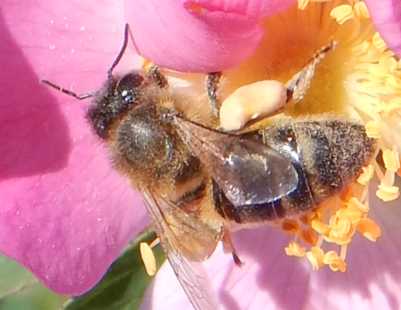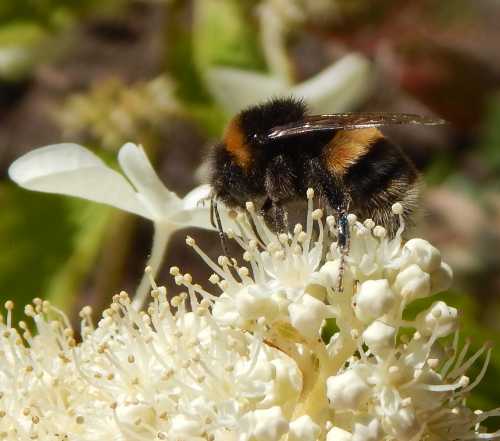Swarming Bees: What’s it all about and why do they do it?
Updated: 28th February 2023
The sight of swarming bees can certainly be unnerving for some people. However, it is a very natural and wonderful part of the life cycle of honey bees.
If you are looking for advice on bee swarm removal,
there is a link at the bottom of this page, however, you'll certainly
benefit from reading about this subject first, so do read on.
Of course, if you read my page about the honey bee queen, you will already have seen my short paragraph on swarming bees. Here, I provide more detail.
All about swarming bees
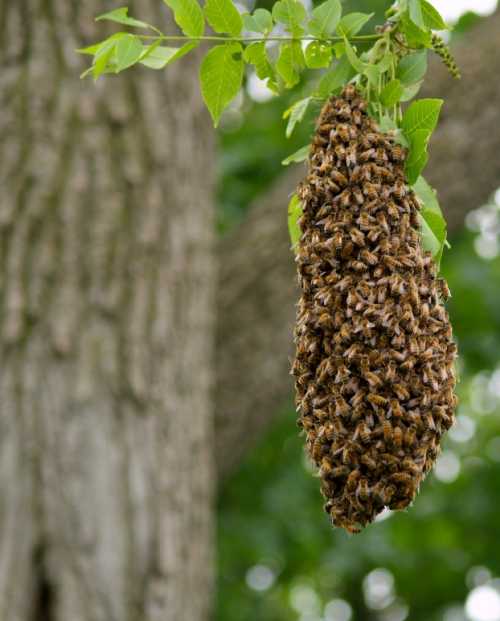 Honey bee swarm hanging from a tree branch.
Honey bee swarm hanging from a tree branch.
Okay, so picture this: the honey bee colony
has survived a cool winter. There are now fewer bees in the colony than
there were during the summer – just the honey bee queen, and perhaps 10,000
to 20,000 workers, all huddled together in a 'winter cluster' to keep warm.
There are no
drones – any remaining drones got the elbow at the end of summer, in order to conserve
food resources!
If the bees live in a hive, then hopefully they had a kind beekeeper who ensured they would have enough of their own honey, full of nutrients and goodness, to sustain them.
As the weather warms up, the colony expands. More workers are produced. The honey bee colony is a super-organism: a closely co-operating unit of thousands of individuals, which maintains its efficiency through being extremely well organized.
There may be 50,000 workers performing a variety of jobs: busily foraging, regulating the temperature in the hive, guarding the colony or tending to the brood, as well as feeding each other, cleaning, creating wax, comb and honey.
Meanwhile, the queen is busy laying, producing more workers, and finally drones.
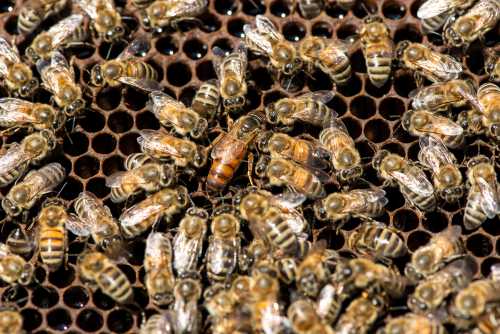
Throughout all this activity, something else very important is happening: communication through ‘pheromones’.
Bee pheromones are produced by workers, drones and the queen. The pheromone is passed on through ‘food sharing’: the members of the colony feed each other, thereby transmitting the pheromone. So, in the act of feeding, the bees are also communicating with each other. This transferring of food from one bee to another is known as ‘trophallaxis’ and also occurs in other social insects.
The queen honey bee produces the ‘queen pheromone’. This pheromone attracts the workers to her, and encourages them to build the comb, forage, and tend the brood.
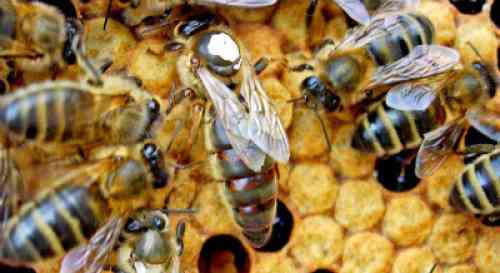
But now back to the honey bee colony.
There is only one honey bee queen, and there are now thousands and thousands of workers. There comes a point when the crowd is so great, that not all of the workers have access to the queen. They are no longer receiving her pheromone signals, and so for them, she is non-existent!
This induces within these workers the need to create a new honey bee queen. If you’d like to know how queens are made, see my page about the queen honey bee.
Soon, we shall have a swarm of bees! Why?
There is no space in the colony for more than one queen.
Before the new queen emerges, the old queen takes off with part of the colony to establish a new nest, but before leaving their original colony, all of the honey bees will fill themselves up on nectar.
Once the swarm has left its
old nest or hive, this is when we might see a whirling mass of
swarming bees in the air, or a bee swarm settled on the branch of a tree
(or possibly somewhere not so convenient!).
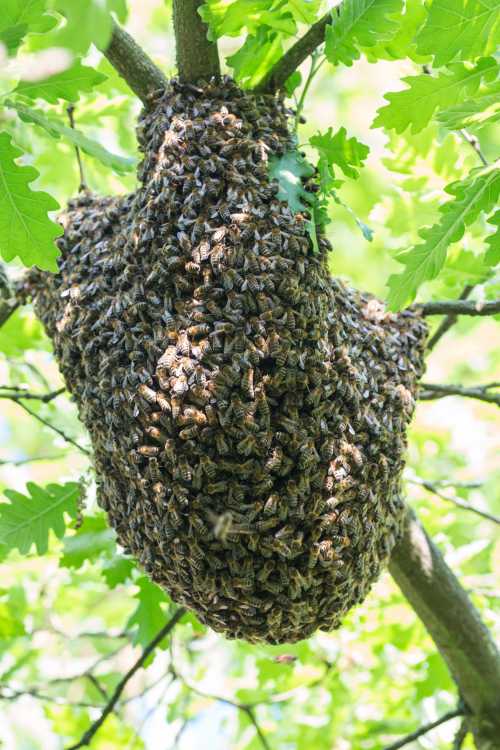
Why do they rest or fly around in a clump?
The reason a bee
swarm looks like a clump of honey bees, is because all of the workers are
gathered around the queen, hence forming a clump.
However, the queen is not the strongest of flyers, and so inevitably will need to rest at some point – perhaps on a branch, post or fence.
Meanwhile, ‘Scout bees’ will be sent out to look for a suitable new place for the colony to live.
Upon finding possible sites, the scouts will return back to the the swarm and perform a waggle dance to tell other colony members about the location of the site.
Eventually, the whole swarm will go through a kind of democratic process in which the members of the colony decide which location would be best.
The swarm is then, arguably an excellent example of collective intelligence in the animal kingdom (or we could call it the hive mind).
Author of Honey Bee Democracy and The Lives Of Bees - Thomas D. Seeley notes:
"....the 1.5 kilograms (3 pounds) of bees in a honeybee swarm, just like the 1.5 kilograms (3 pounds) of neurons in a human brain, achieve their collective wisdom by organizing themselves in such a way that even though each individual has limited information and limited intelligence, the group as a whole makes first-rate collective decisions."
Are swarms dangerous?
They are focused on finding a new nest, not on attacking humans. That said, it is important to keep your distance from swarming bees, because if the bees feel threatened, then it is possible they will sting.
A swarm may stay around for a few days, depending on how quickly the scout bees find a suitable new home. This could happen very quickly, even within a day.
If, however, you come across a bee swarm that really is too inconvenient to tolerate, then firstly:
- Do not attempt to move or destroy the swarm. Such attempts could seriously back fire.
- Follow this link to get free advice on bee swarm removal.
Resources
Books: Honey Bee Democracy and The Lives Of Bees by Thomas D. Seeley.
If you found this page helpful or interesting, I'd really be grateful if you would share it with others - if not this page, perhaps another, such as Gardening For Bees.
Thank you so much :) .
